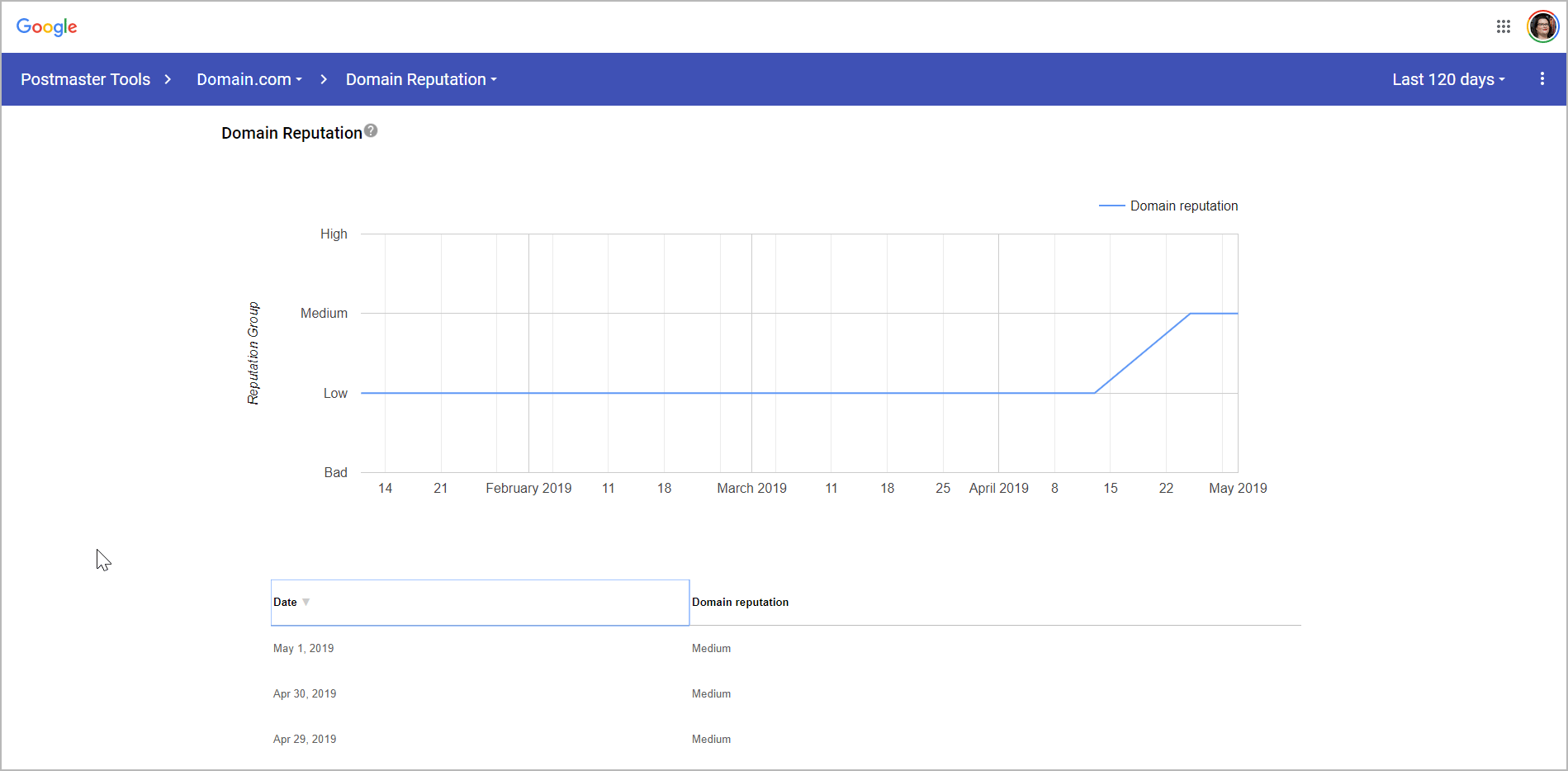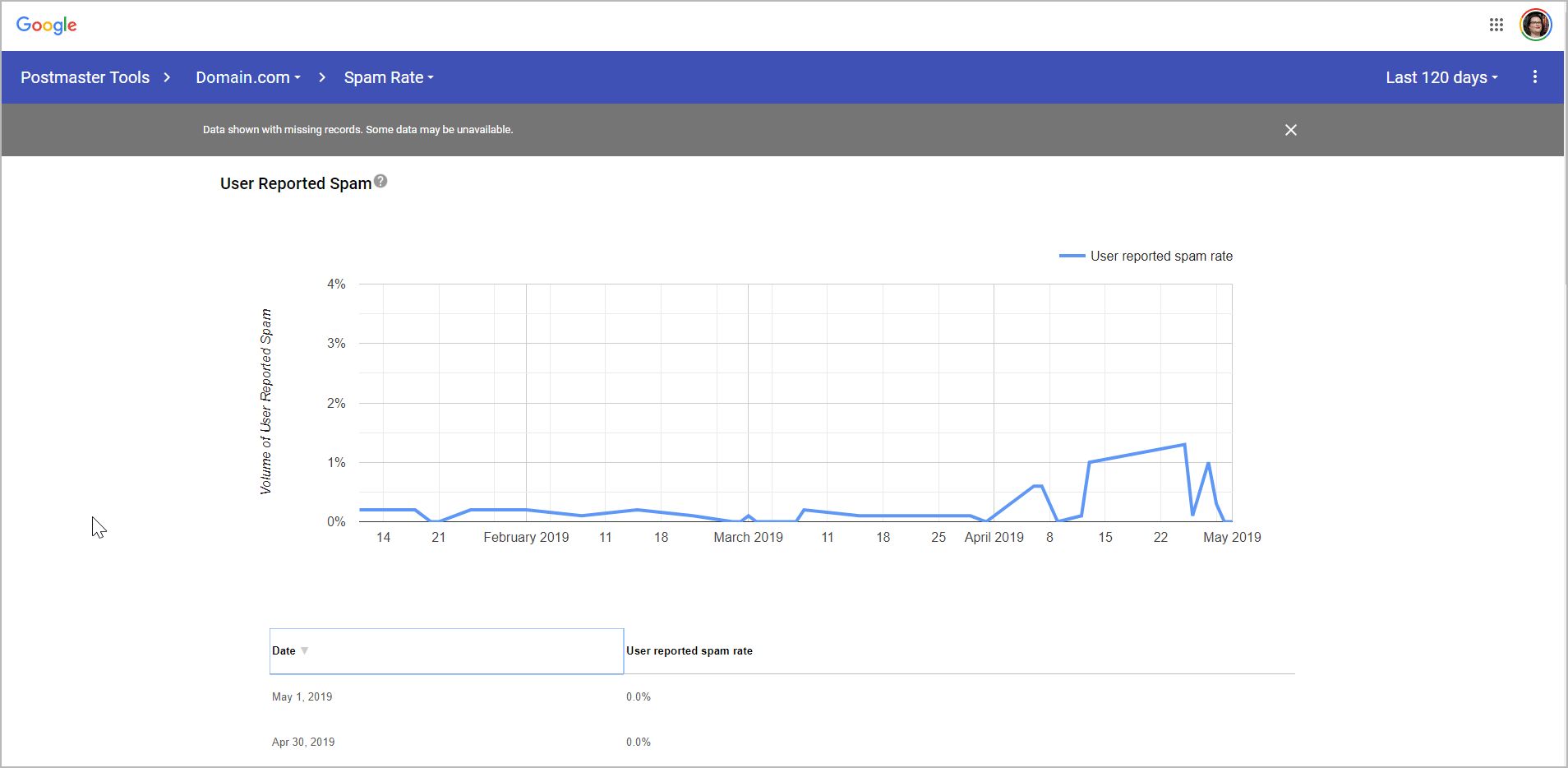Email Sender and Domain Reputation
Ask LB: Google Postmaster Tools doesn’t like us. How can I fix it?
minute read

Recently I received the following question:
Dear LB,
Any tips on how to handle Google Postmaster Tools’ (GPT) bad ratings of our domain and IP?
Regretfully,
Worst IP Razzie Nominee
Buckle up Razzie, because I got tips and tactics for days, but the hope is to order them such that identifying and resolving the problem takes the least number of days. (Our Experts team gives a good intro to GPT in this video, for anyone playing along at home.)
Your first step is to look at the domain’s reputation over the full 120 days and note any dates where reputation changed, and to what degree.

Then, try to rule out the most probable causes of each change one by one, with these two reasons being most common:
- Spam complaints
- Insufficient engagement/reputation to support the email volume the sender is attempting to deliver into Gmail/G Suite
If your domain has a spam rate problem at Gmail, this is likely to be the primary driver of any deliverability problems, because spam/abuse complaints submitted by users are the ultimate fall-back system spam filtering relies on. Gmail puts an extreme emphasis on this as it’s effectively like crowd-sourcing the decision to their 1.5 billion monthly active user base. I think we can infer at least some of what Gmail cares about from the UI in Postmaster Tools. For example, anything under 0.1% doesn’t show up on the Spam Report, though we don’t know how many decimal places they go back for rounding purposes. In my experience, senders routinely landing at or above 0.3–0.4% are going to have problems, but I have seen some glaring exceptions.
Your second step is to duplicate that tab of the browser and switch to the graph for Spam Rate over that same period of time. Check the dates where reputation changed to see what the complaint rate was at that time.

If every time the reputation dipped, complaint rate was higher than the average, that’s likely the issue. Checking periods where reputation went up is also useful for further confirmation this is the problem; in the absence of a high complaint rate, does reputation improve?
If you’re confident complaints are the issue, you’ll want to try and track down the source of the complaints, which can really only be done by proxy. How? Pull up your email service provider (ESP) and look at spam/abuse complaints coming from Hotmail/Outlook.com, Yahoo, AOL, regional ISPs, and anywhere else you can get data. Then look for commonalities:
- Do they share the same lead source?
If you truly have a complaint problem, this info allows us to rate our lead sources from most to least risky. If there is a strong correlation to a particular lead source, maybe consider reassessing your approach. - Did they come in via a specific form?
You might have endured a spambot attack. These bots hijack legitimate brands’ sending infrastructure and reputation in order to flood a user’s inbox with messages so important notifications hopefully get lost in all the noise. - When is the last time the complainant was delivered an email?
If you haven’t sent to them at least once within a normal buying cycle for your product, chances are they’ll forget they’ve ever subscribed. The usual culprit here is a missed filter. - When is the last time the complainant opened or clicked mail?
No engagement? This is the clearest sign they aren’t interested, and you should cut them from your email roster sooner rather than later. This doesn’t mean you have to give up on this lead, but you should try a different approach or, at the very least, take a break with them and try again later. A useful metric to know is the amount of unopened and unclicked emails after which it becomes more likely someone will disengage than re-engage. Once you figure this out, look at the statistics again based on the length of time since last engagement to glean after what period of inactivity is a subscriber’s probability to re-engage less than 50%.
If the complaint rate is a solid 0.0% across the last 30-120 days yet your reputation is bad, it likely means a very small number of messages are actually reaching the inbox, and are instead landing in the spam folder. Now the problem is the volume of mail sent to Gmail/G Suite exceeds the volume for which they believe a brand reliable. It’s basically like maxing out your credit card and still trying to charge more, but for email. Additionally, the credit company will be clear about denying you more credit. Gmail won’t be so direct. They’ll put an increasing number of emails into spam, convincing the filter you belong there, and boom. Deliverability problem.
Regardless of whatever caused the problem initially, scale back sending volume while minimizing the financial impact to the business. You balance this by knowing which emails are performing the worst, especially in the case of automated drip campaigns, and cutting volume there. Remember the cuts don’t need to be permanent, but initially volume must be reduced enough to make sure Gmail notices the change and re-evaluates your reputation.
To determine how far back to cut volume, I typically like to look at the raw number of unique opens a brand is getting daily at Gmail for the past 14 to 30 days, and send about double the amount on the first day of re-warming. Then I follow a process of adding volume back in gradually, as long as you continue to get a 20% open rate.
Example: If for the last 30 days my average number of unique opens is 300, then I will craft a segment for re-warming Day 1 targeting roughly 600 recipients. If this gets a 20% or greater open rate after five hours, I will send to 1,200 recipients the next day. If my open rate for Day 2 is only 15%, I’ll try again on Day 3 with the same number as the day before (1,200). If I see the unique open rate continue to drop, I’ll either stop sending on Day 4 entirely or scale volume back (autoresponders only).
With Gmail dominating B2C lists, used by 50% or more recipients, and G Suite market share growing, getting domain reputation on a stable footing is typically going to be one of the most important objectives for your business. But you can do it! And if you need more help, let us know.